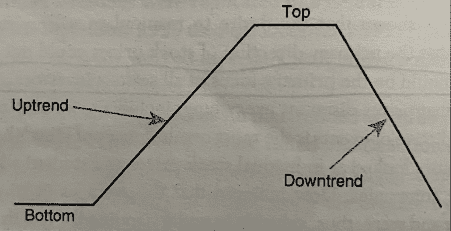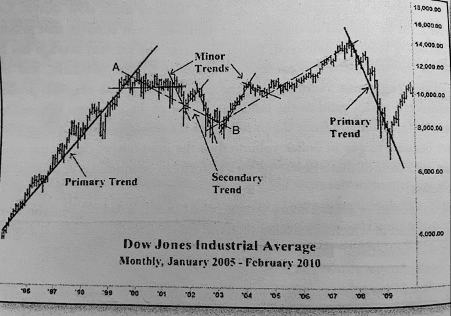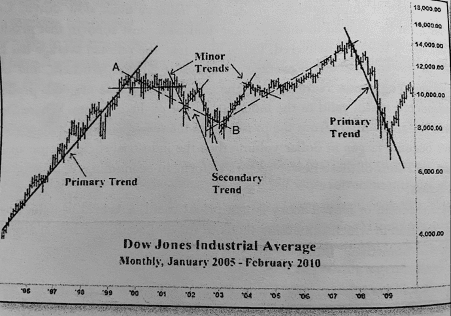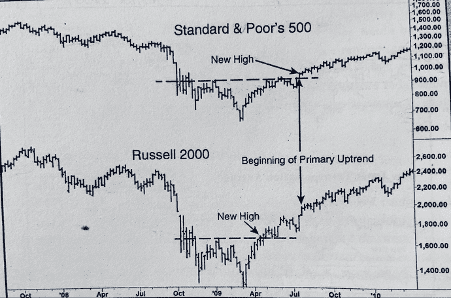Dow Theory was predicted by Sir “Charles Dow” and this theory states that the ideal market picture consists of an uptrend, top, downtrend, and bottom, interspersed with retracements and consolidations.
Example:

Some important observations of Dow Theory are as follow:
- Dow Theory presumes that prices oscillate over long periods based on the accumulated emotions of investors as well as the facts of the business cycle.
- Economic rationale should be used to explain stock market action. Remember that Sir “Dow”created both an industrial average and a railroad average.
- Dow Theory says that a TREND is defined as the general direction in which something tends to move, as we are talking about markets, that “something”is price. (Prices tend to trend.)
Dow Theory posited that there are three basic trends in price motion, each defined by time:
- Primary Trend: The broad upward or downward movements known as Bull or Bear Markets, which may be of several years duration.
- Secondary Trend: An important decline in a primary bull market or a rally in a primary bear market. These reactions usually last from three weeks to as many months
- Minor Trend: This is third, and usually unimportant, movement is the daily fluctuations.
Example of trends:

The Primary Trend: The longest of the three types, it represents the overall, broad, long-term movement of security prices.
The Secondary Trend: The intermediate-term trend that runs counter to the primary trend.
The Minor Trend: The minor and mostly misleading price fluctuations which are of little value when formed.
Concept of Confirmation:
Concept of Confirmation says, “Conclusions based upon the movement of one average, unconfirmed by the other, are almost certain to prove misleading” means confirmation in Dow Theory comes when both the industrial and railroad averages reach new highs or new lows together on a daily closing basis. These new levels do not necessarily have to be reached at exactly the same time, but for a primary reversal, it is necessary that each average reverses direction and reaches new levels before the primary reversal can be recognized. Failure to reach new levels during a secondary reaction is a warning that the primary trend may be reversing.

||Pro Tip: The usual method of confirming a primary trend is to use confirmation between two indexes as per Dow Theory. ||

Criticism of Dow Theory
One of the criticisms is that following the Dow Theory will result in an investor acting after rather than before or at market tops and bottoms as the theory does not recognize a turn until long after it has occurred and has been confirmed.
Conclusion
Although Charles Dow never formalized Dow Theory, his work has formed the basis for modern-day technical analysis. Despite the many changes that have occurred in securities markets over the past century, much of Dow’s basis work applies today as well.
